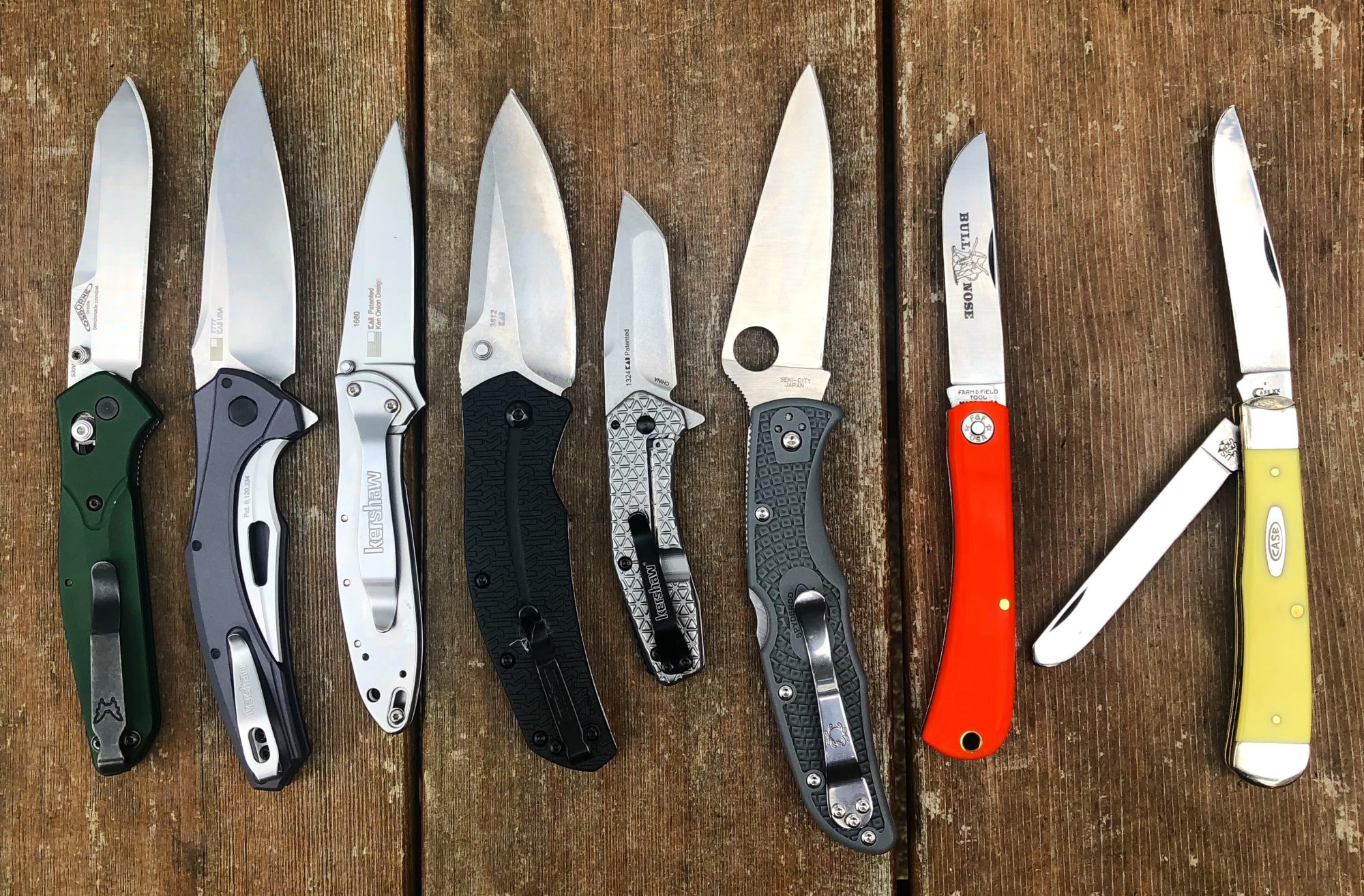The WarHorse is a modern slipjoint made by LionSteel for CollectorKnives. It’s one that I’ve been looking forward to trying for a while, as CollectorKnives announced it on their Early Reserve page early this year. I had previously tried the CollectorKnives Shuffler, which is the single clip blade version, and liked it other than the handle material. The main reason I decided to get this knife is a bit convoluted; Mike at CollectorKnives had an SFO made by Great Eastern Cutlery in 2014 of a #77 NorthField barlow with clip point and wharncliffe full sized blades. I decided not to get one and wish I had. When I saw Mike was doing one of his modern barlows with the same blade combination I decided to check one out.

The WarHorse is an interesting mix of modern and traditional. First and foremost, it is a slipjoint. It is non-locking, and uses a backspring to stay open and stay closed. It also has the hallmarks of a traditional barlow; an elongated bolster on a jack frame. Additionally, it’s a two hand opening knife that uses long pulls. Finally, on the traditional side, the clip point and wharncliffe blades are traditionally shaped. However, that’s where the traditionality ends. Rather than being pinned, the WarHorse is held together with torx screws. It also has a pin that the blade kicks fall upon when closed, eliminating the risk of blade rap. Finally, rather than the blades pivoting directly against the liners like on a traditionally built knife, the WarHorse has phosphor-bronze washers between the blades and liners.

The grip is comfortable enough with either blade open due to the width of the handle 
The grip is slightly more ergonomic with the Wharncliffe open
LionSteel did a great job making this knife. It came with nice action; great walk and talk, healthy snap, and a nice 5.5ish pull (just a little stronger than a Victorinox Swiss Army Knife). The blades are nice and tight, with no play or wobble, and they’re both centered dead down the barrel. The fit is different than on a traditionally made knife. Since the knife is held together with screws, the transitions between handle cover and bolster and liners and springs can’t be polished flat. Instead, all of the edges are nicely rounded so that they come together smoothly. The washers help to provide extremely smooth action without any blade play right out of the box, but they also create small gaps between the blades/springs. The blades seem to be ground quite thin, for good slicing capabilities, and evenly. The long pulls (which, unlike on the vast majority of traditional slipjoints, are on both sides of the blade) are a little more rounded than I’d prefer. A traditional long pull has a square / angled inside upper edge which allows the fingernail to catch securely, whereas the WarHorse long pulls are radiused. This radius can sometimes lead to my fingernail slipping off the blade, especially on the pile side wharncliffe blade. Although the WarHorse is not traditionally built, it is certainly built well.

Back springs with no spacer 
Stop pin that eliminates blade rap 
Brass washers for smooth action 
Perfect centering and full blades 
Really nice carbon fiber goes well with the titanium bolster 
Collector Knives etch
One of the WarHorse’s biggest drawing points is its high end materials. It comes in several different handle materials including olive wood, ram horn, ebony wood, and carbon fiber. I went with the carbon fiber, because I think it really fits with the traditional meets modern aesthetic. Knives have been handled in synthetic materials for around a hundred years, like micarta and celluloid, but carbon fiber is a new age material and I felt that it represented the mix of modern and traditional in the overall WarHorse. It is handsome carbon fiber, with no noticeable voids and a nice even weave. The blades are M390 steel. M390 is a recent super steel that is well liked for its high performance across all categories: edge holding, toughness, corrosion resistance, and sharpenability. Finally, the liners and bolsters are a nice tumbled titanium, for strength and lightness. The materials on the WarHorse are high end, but I do believe (if the WarHorse was made with pin construction) the materials do not exclude it from being a traditional knife. I really appreciate the high end materials that make up the WarHorse, especially considering super steels are so rare on production slipjoints.

Overall, I think the WarHorse is a knife that the slipjoint market needs. It brings to the market a knife with high end materials and newer build technology while retaining a respect for and homage to the traditional knives from which it draws inspiration. I don’t think it has the same spirit and soul as a traditionally made barlow, if I’m being honest, but it offers more muscle and utility to even things out. The WarHorse builds a bridge between the modern and traditional knife segments, and hopefully will continue the trend of production knife companies making knives with traditional designs.

Compared to some recent GEC patterns, the #29 and #97 
Thickness compared to the single blade #97 and 3 blade/spring #29 
Compared to the Spyderco Domino and Spyderco Native
The WarHorse is a CollectorKnives exclusive. You can get one for yourself from CollectorKnives.net (they are in stock as of 8/20/19). You can find all of the different versions for between $162 and $172 at this link. Tell Mike you heard about the WarHorse on Knife Thoughts!

I sincerely thank you for your time, support, and interest! Don’t forget to tell your friends about KnifeThoughts.com, subscribe via email, and share this article on social media. You can find Knife Thoughts on YouTube where I have hundreds of knife videos, as well as on Instagram and Facebook! You can find all my latest links at LinkTr.ee/KnifeThoughts














